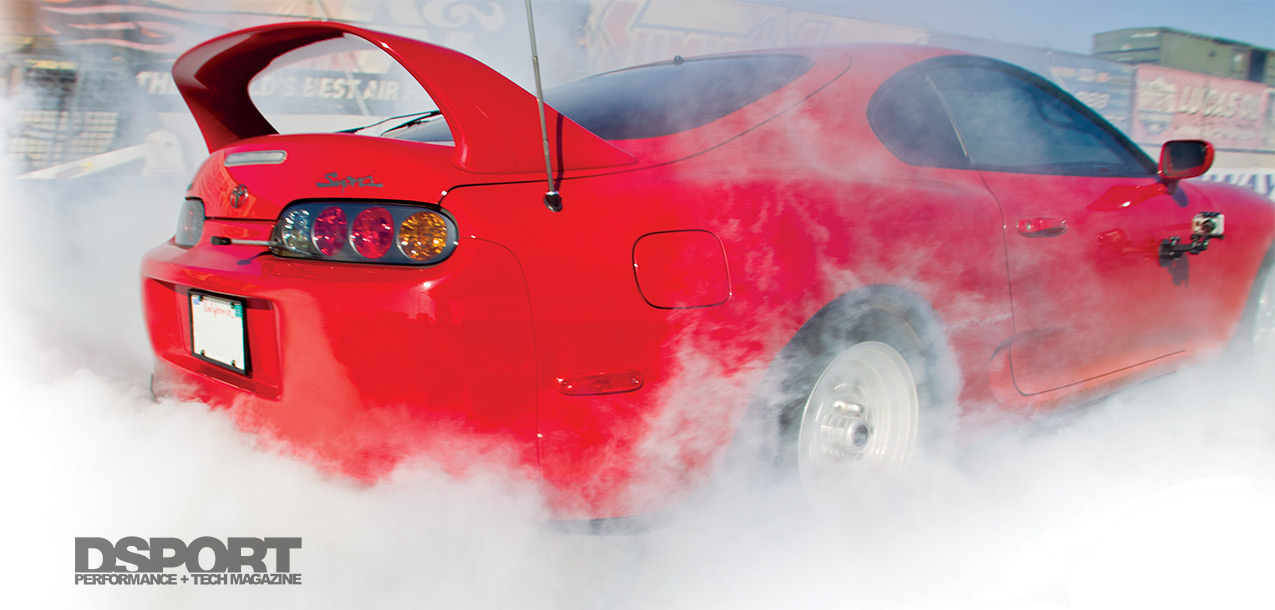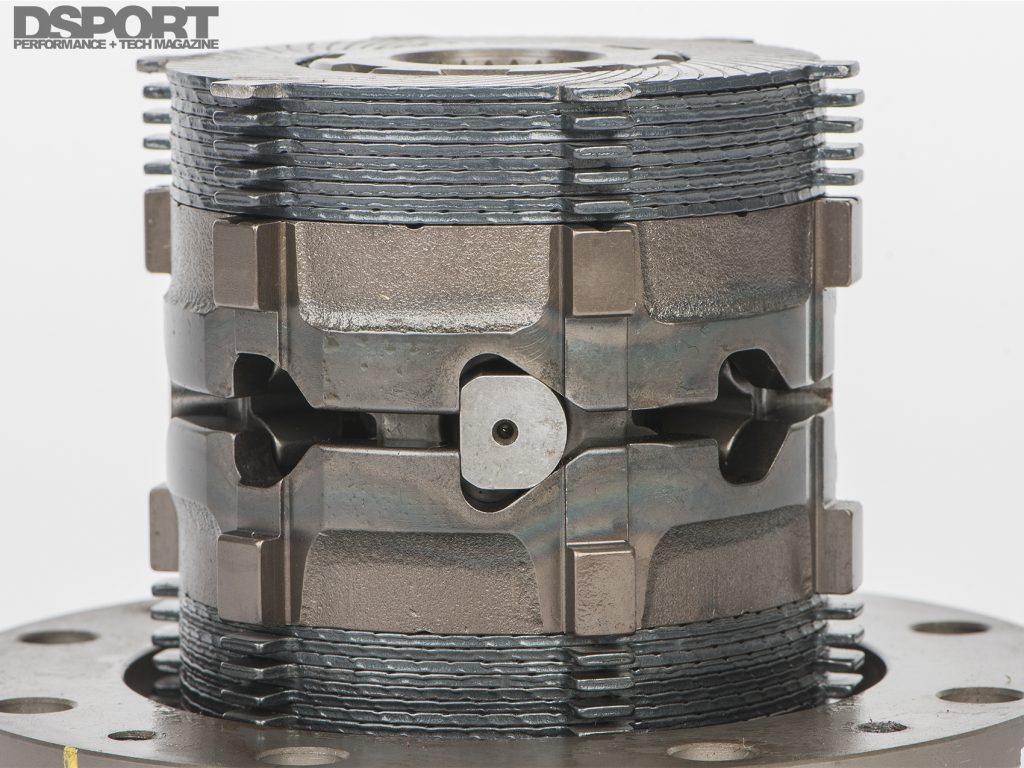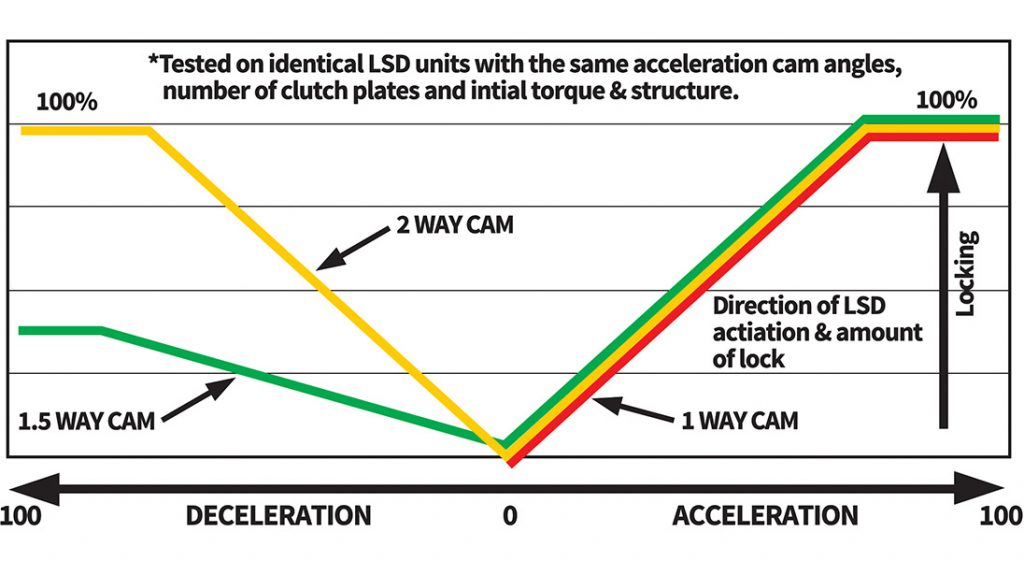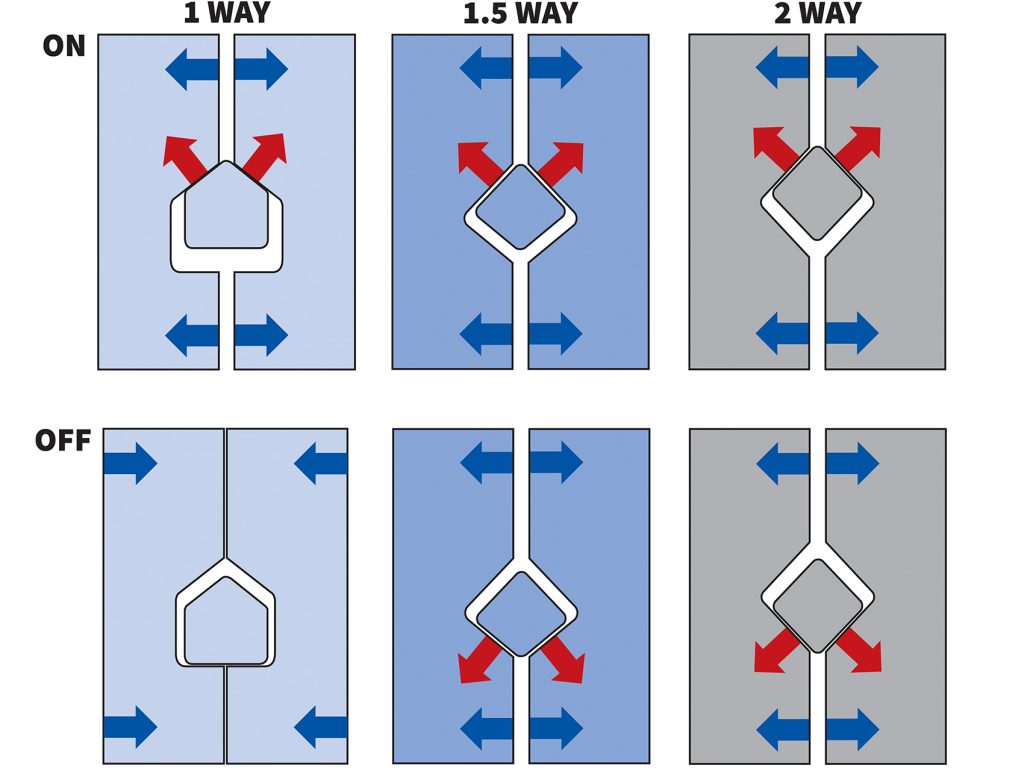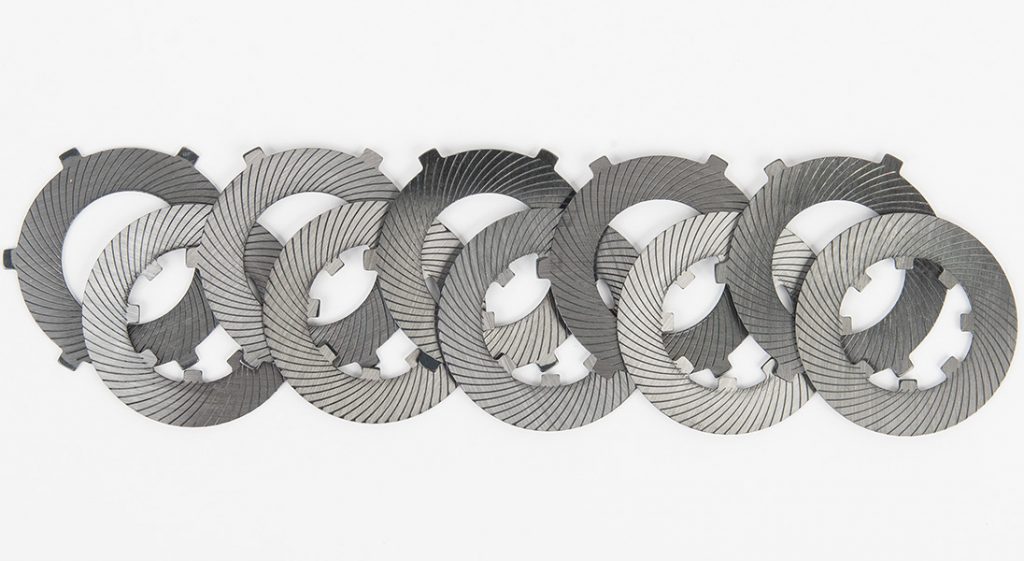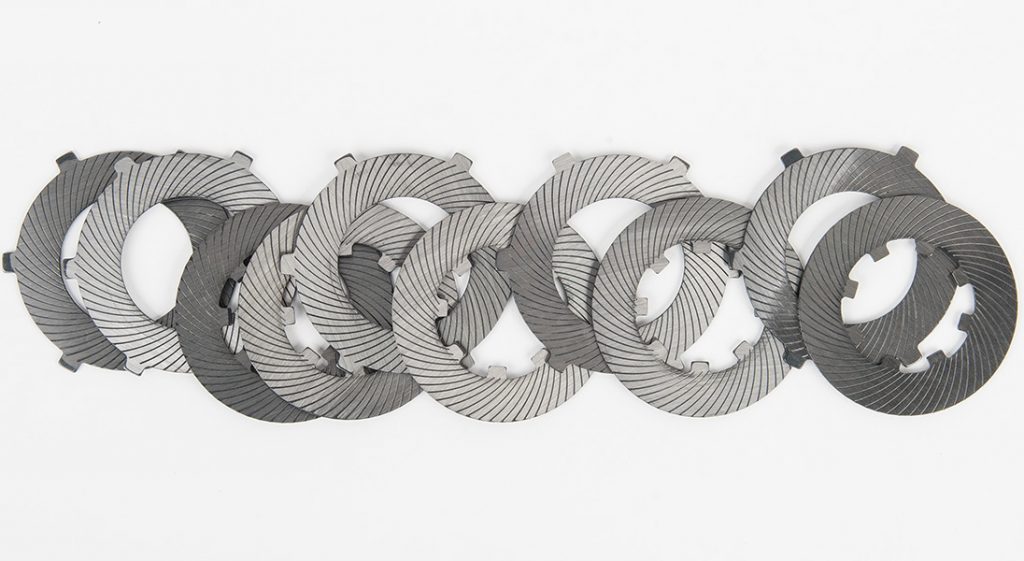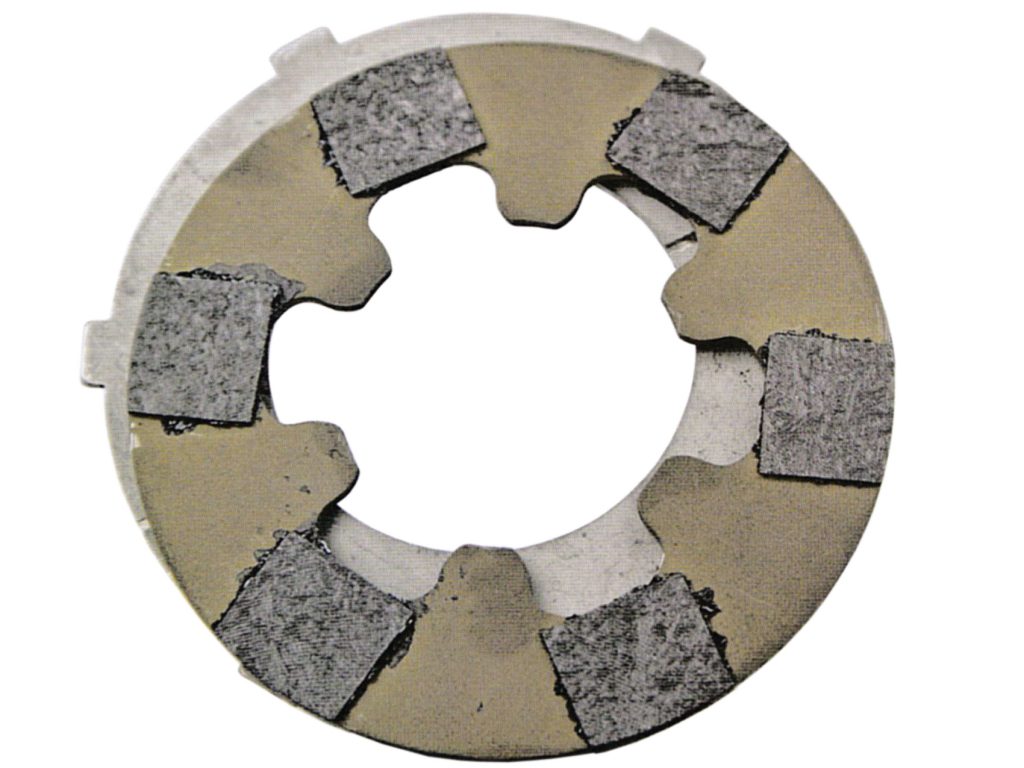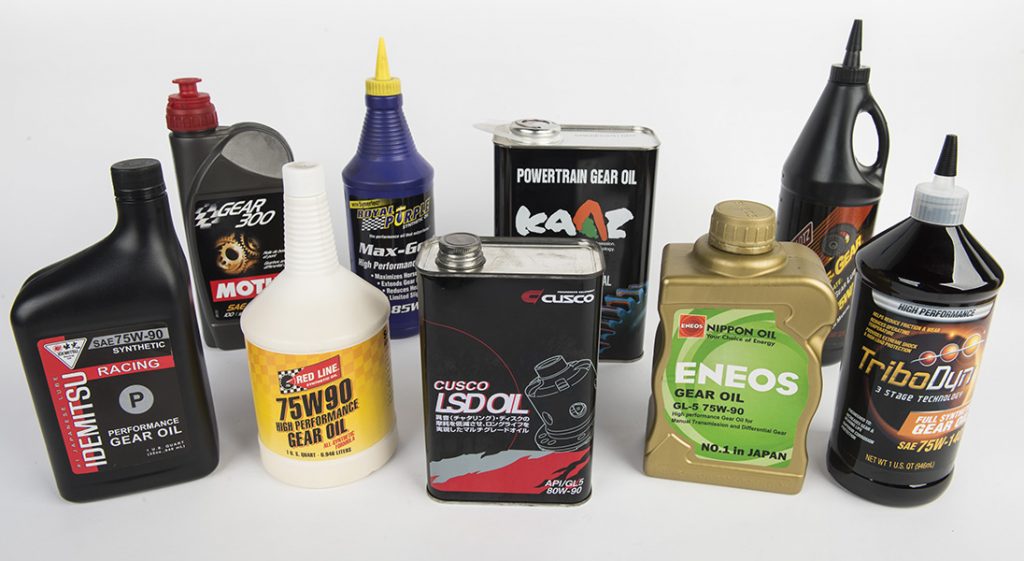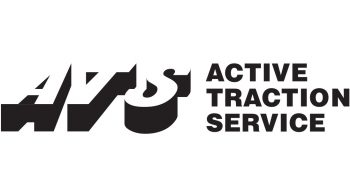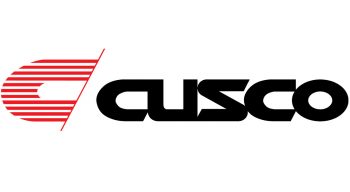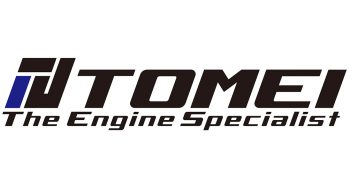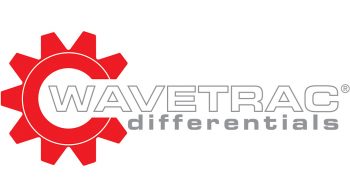Clutch vs. Gear
In motorsports, you will find most of the vehicles using a clutch-type LSD while nearly all of the new performance vehicles leaving the factory rely upon a gear-type torque-biasing differential. That’s not to say that clutch-type LSDs are better for competition or that a gear-type torque-biasing differential is better for the street. Both designs can deliver increased performance in either arena. However, gaining an understanding of the benefits and considerations for each design is helpful in selecting the best unit for your vehicle and usage.
The Clutch Player
Not all clutch-type LSDs are created equal. The OEM clutch-type LSD that came in your 1984 RX-7 is likely to have a significantly different design and performance profile than an aftermarket LSD. Still, all clutch-type LSDs will share some common traits.
First, a clutch-type LSD will always send power to the wheel with more traction or grip even if one of the drive wheels loses contact with the ground. Second, aftermarket clutch LSDs will almost always have larger diameter clutches and a higher clutch count than the OEM. This increases the torque capacity of the locking mechanism and generally increases the responsiveness of the LSD. Third, most clutch-type LSDs can be “tuned” to vary the responsiveness of the locking effect. This can usually be done by changing the clutch capacity (rearrangement of the clutch discs), the initial torque (changing the cone and/or coil springs and preload) and the cam ramp angles (gradual or aggressive engagement). Finally, a clutch-type LSD may also be available in a number of different configurations for a particular application. This will allow a selection of a 1.0-, 1.5- or 2.0-way clutch-type differential to deliver the locking effect only on acceleration (1.0-way), on both acceleration and deceleration (2.0-way) or a combination of full locking effect on acceleration and a reduced effect on coast, deceleration and braking (1.5-way). Depending on the powertrain layout of the vehicle (FF, FR, AWD), the placement of a 1.0-, 1.5- or 2.0-way differential will deliver different results.
There is also a list of considerations when choosing a clutch-type LSD. First, these units typically offer no warranty or a one-year warranty at best. Second, these units will generally require a break-in and the regular changing of the differential oil. Failure to follow the manufacturers recommendation for the break-in and maintenance can not only result in reduced performance, but also accelerated clutch-wear reducing the service interval. Third, if you desire to “tune” the LSD, it’s possible that your calibration won’t perform better than the “as-delivered” setup. This is why it is important to rely upon an authorized tuner to tune the brand of clutch-type LSD that you are using.
1.0-Way, 1.5-Way, 2-Way
We’ve already tossed around the terminology of 1.0-way, 1.5-way and 2-way with regards to LSDs. As previously mentioned, some manufacturers use a cam-groove design in their LSD that ramps in the limited-slip. A 1.0-way differential will only have a positive lock to limit slip during acceleration. A 2.0-way differential will limit slip during both acceleration and deceleration (in gear off throttle, not the vehicle’s brakes). A 1.5-way differential is actually a 2.0-way differential with different lockup rate between acceleration and deceleration. Depending on the application, a 1.5-way may provide a more forgiving balance for beginners during no-throttle conditions. Sometimes, it may also be more effective for front-drive cars that need extra stability during braking.
ON throttle: The blue arrows represent the force being applied to the clutch discs during throttle input. A 1.0-, 1.5- and 2.0-way LSD will all have the same behavior when thottle is applied, as long as the cam angle, preload and clutch arrangement is the same.
When throttle and torque input into the differential is light, the applied force on the clutch packs is light. Heavy throttle input increase the force and the amount of slip.
OFF throttle: This is where having a 1.0-, 1.5- or 2.0-way LSD makes a difference. When there is no throttle input and the vehicle is decelerating thanks to engine braking (not vehicle braking), a 1.0-way LSD will not add any slip limiting beyond the base set preload. A 2.0-LSD has the same cam angle for accel and decel and as a result it will deliver the same amount of slip limiting based on the torque input. A 1.5-way uses different cam angles to add less locking on decel than acceleration.
Cam Angles
 A more aggressive cam angle will add more dynamic force on the clutch packs to limit slip quicker. This is often linked to the “responsiveness” of the LSD. Many factors will determine how much preload and angle is ideal for a particular setup. Be careful comparing cam angles from different manufacturers as the reference is often reversed.
A more aggressive cam angle will add more dynamic force on the clutch packs to limit slip quicker. This is often linked to the “responsiveness” of the LSD. Many factors will determine how much preload and angle is ideal for a particular setup. Be careful comparing cam angles from different manufacturers as the reference is often reversed.
Drift = 2.0 Way Clutch LSD
If your intended use for the LSD is to go drifting, avoid a gear-type and look for a 2.0-way clutch-type LSD. Since drifting requires a near analog (on or off) full locking of the differential, a high preload, high ramp response, max clutch pack arrangement will generally deliver the best results. With a 2.0-way LSD, the engine braking (coming off throttle in gear) delivers a similar locked condition, making the car as predictable as possible during switchbacks and the like. Since a gear-type LSD never locks both wheels, a tremendous amount of heat will build up as it oscillates the power delivery to the rear wheels.
100% Setting
80% Setting
60% Setting
While most friction discs are metal in LSDs, ATS offers a carbon puck version for smooth engagement.
Clutch Materials
Nearly all clutch-type LSDs rely upon metal clutch discs. These clutch discs generally provide a very long clutch life. Most of these clutch discs are grooved to improve lubrication flow, but some will have both flat and smooth discs mixed in with the grooved. In addition to metal, ATS offers a carbon LSD option that features carbon pucks on the clutch disc. The carbon allows for a smoother engagement which can be beneficial for both street and track usage.
Clutch Plate Treatments
WPC treated or Micro Dimple Treated (MDT) steel clutch discs are gaining popularity in metal clutch LSDs. In fact, both Kaaz and Cusco LSDs now feature these processes on the clutches while OS Giken offers a TDM spec clutch with the same benefits. The micro shot peening processes increase the surface hardness of the discs while leaving a dimpled surface that improves oil retention.
Clutch Break-In
Bedding in two metal surfaces against each other can be quite a chore. The break-in procedure for a metal clutch-disc LSD is intended to properly wear the metal clutch surfaces against each other. It is imperative that the manufacturer’s directions are exactly followed with the recommended differential oil to achieve best results. Depending on how aggressive the LSD is set up, it is possible that chatter will still be experienced after break-in. If the chatter bothers you, a friction modifier may be added to the differential oil (check with the LSD manufacturer first). The friction modifier will allow the discs to slip without chatter while sacrificing a small amount of responsiveness. Always follow the recommended process. Some metal clutch LSDs will not require a break-in either due to the design (zero preload) or the treatment of the clutch discs. There is no reason to perform figure-8s for 30 minutes at full lock if not needed.
There are a bunch of choices when it comes to gear oil for your differential. Make sure you select a product that is recommended by the manufacturer of your LSD. If chattering occurs, a friction modifier can sometimes be added.
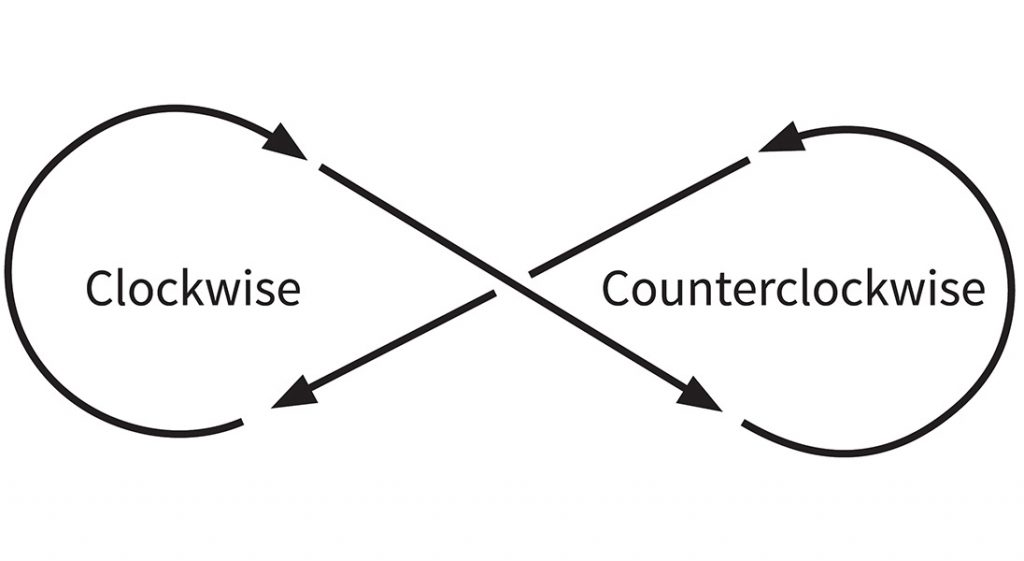 The break-in procedure generally involves performing a number of tight figure 8s. Crank it full lock and back to full lock while always keeping some throttle input where possible.
The break-in procedure generally involves performing a number of tight figure 8s. Crank it full lock and back to full lock while always keeping some throttle input where possible.


